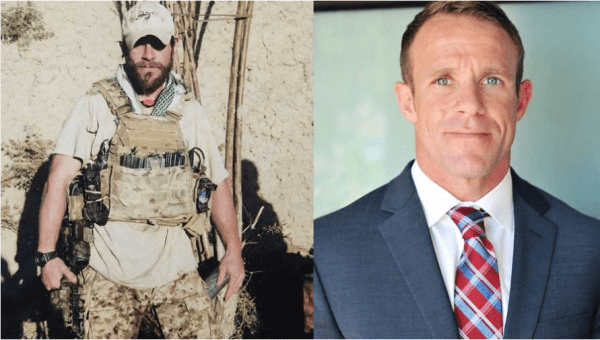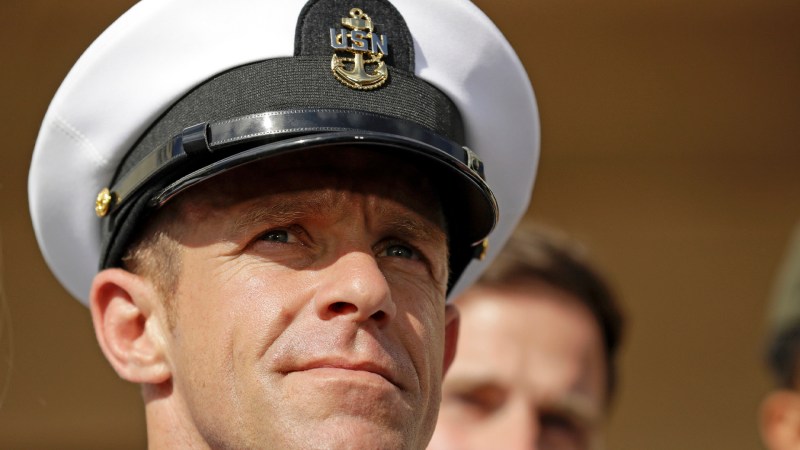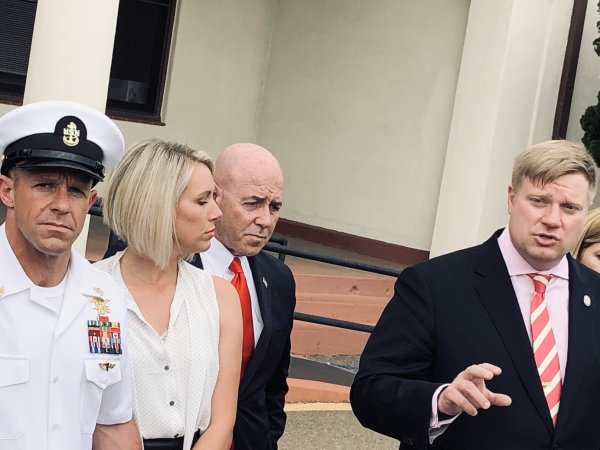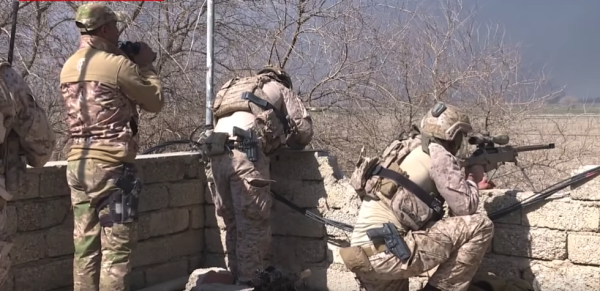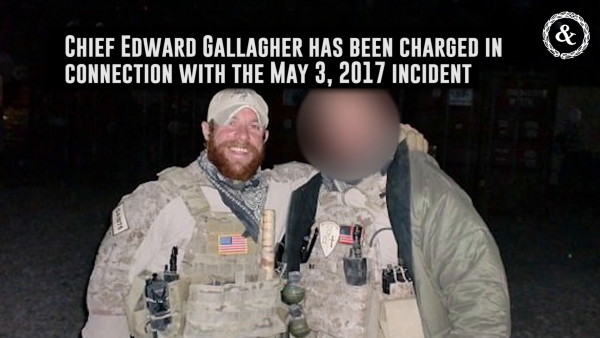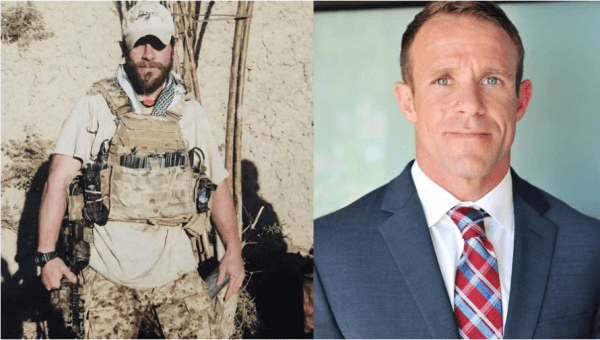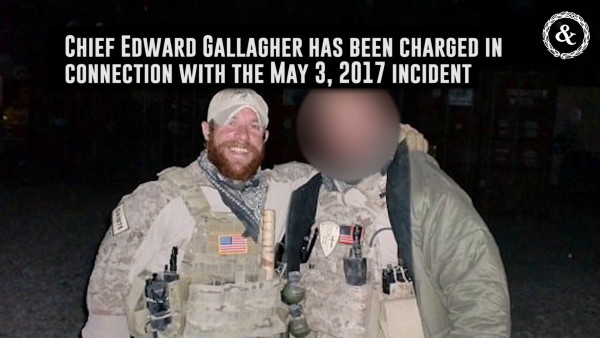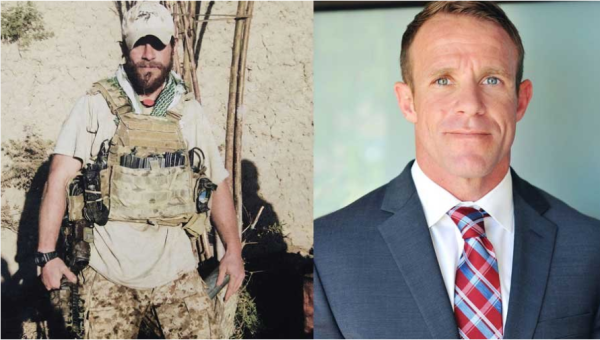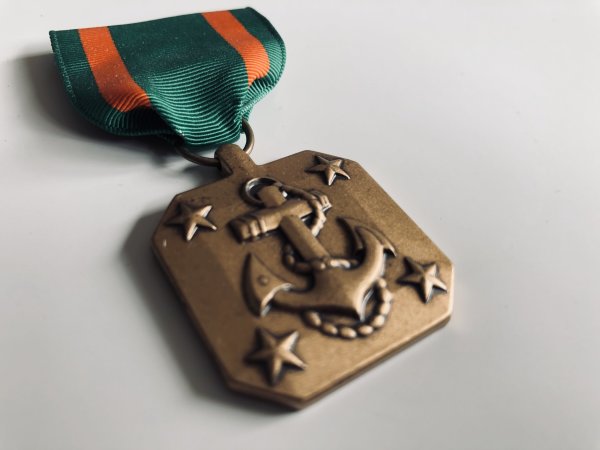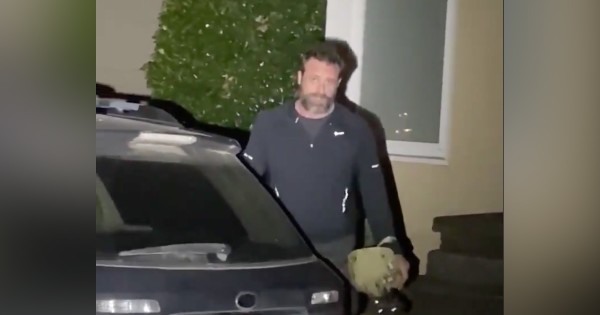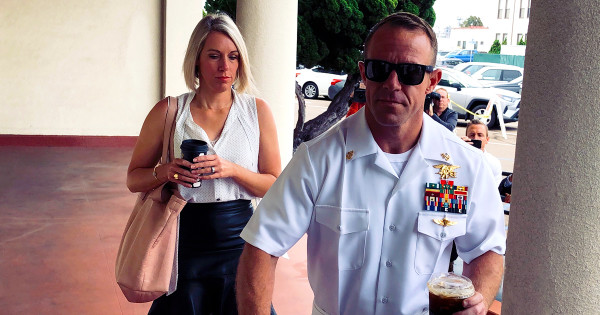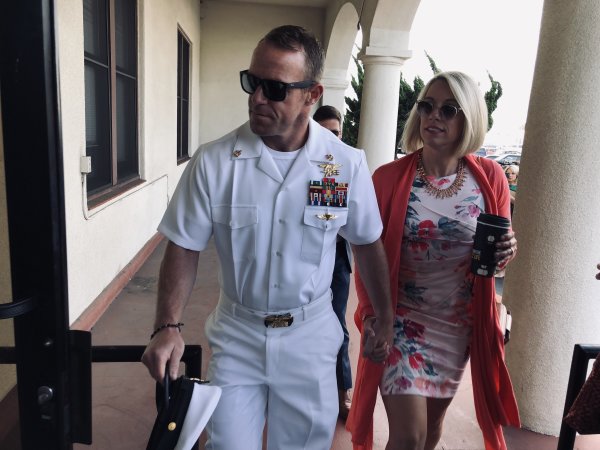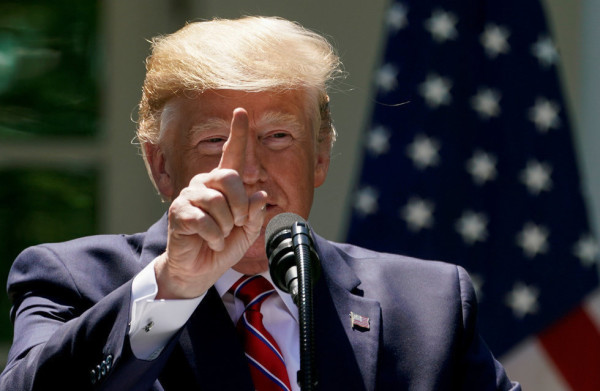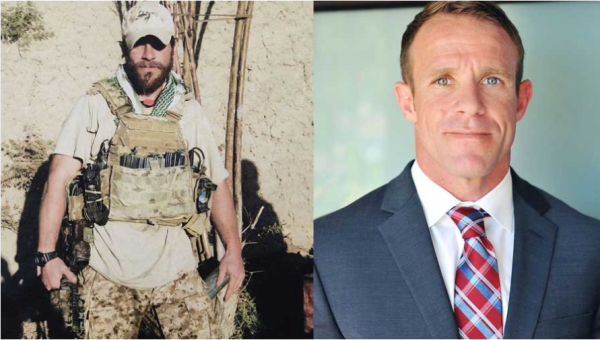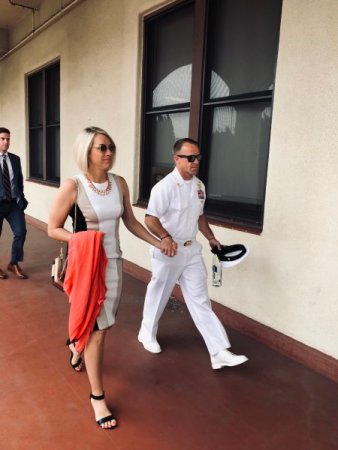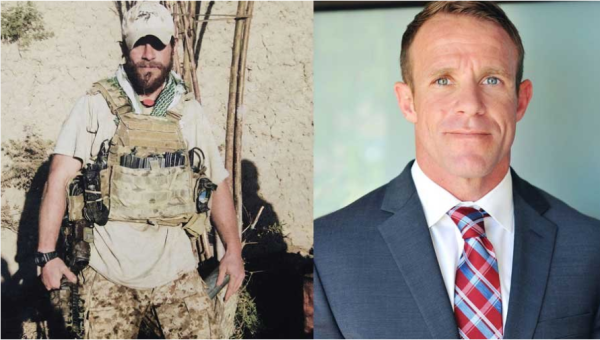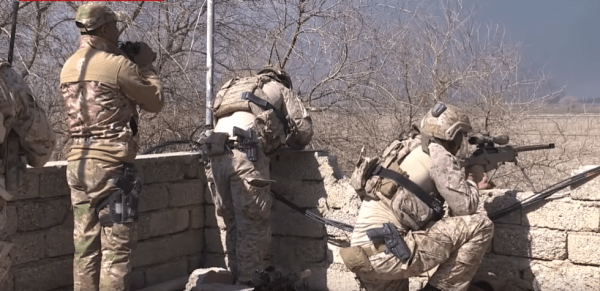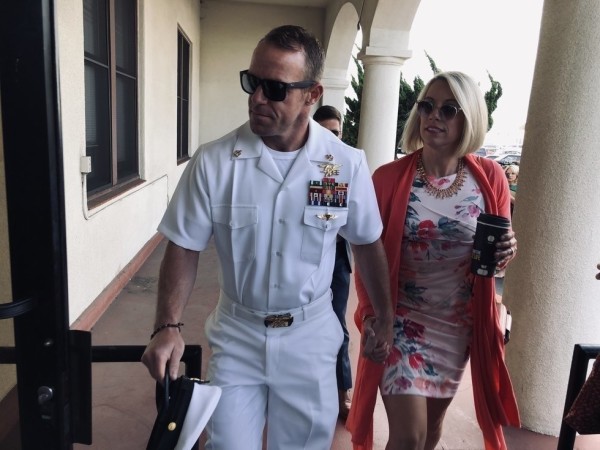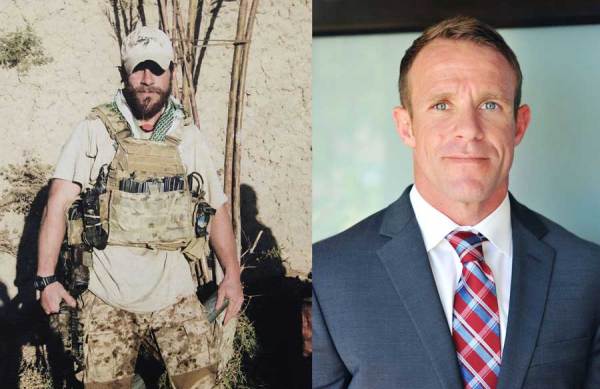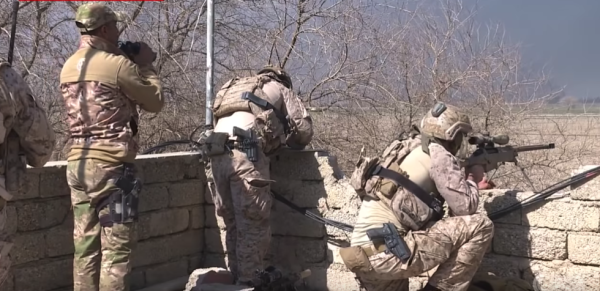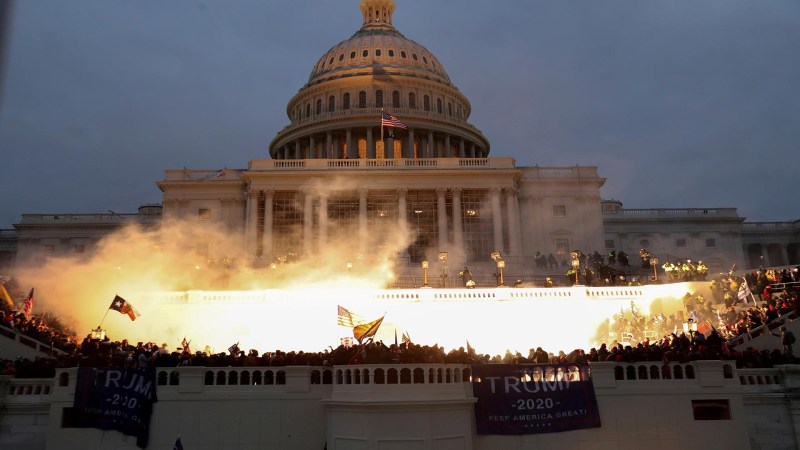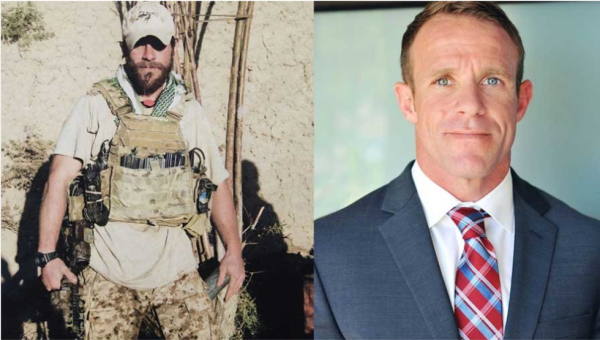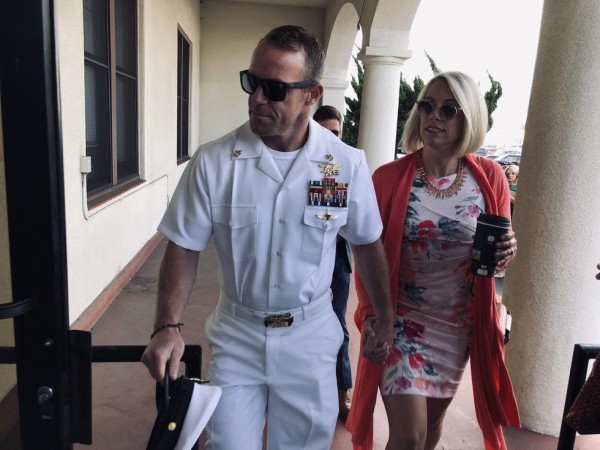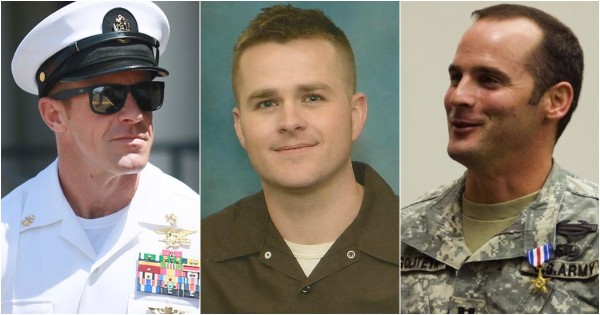The civilian attorney for a Navy SEAL accused of war crimes has filed a motion in the case accusing the prosecution and investigators of suppressing witness statements that could prove favorable to his client Navy SEAL Chief Edward “Eddie” Gallagher.
Gallagher, a 19-year SEAL, was arrested Sep. 11, 2018 on accusations that he stabbed and killed a wounded ISIS fighter and shot at unarmed civilians with a sniper rifle during his 2017 deployment with SEAL Team 7 to Mosul, Iraq.
But the April 23 motion, which calls evidence for the murder charge “weak,” zeroes in on the sniper charges and seeks to have them dismissed since they “are absolutely unsustainable” and “rely solely on debunked hearsay statements,” wrote Timothy Parlatore, Gallagher’s attorney.
As first reported by Navy Times, Parlatore accused the government of failing to properly comply with discovery and criticizes the chief NCIS investigator with a “large pattern of misconduct” in attempting to minimize evidence that conflicts with “his pre-determined conclusions.”
“The Government’s misconduct in suppressing exculpatory statements from was fortuitously revealed through leaks to the media and Capt. Conor McMahon’s reflexive, false, and quickly discredited denial raises serious concerns about what other exculpatory materials have also been withheld,” Parlatore wrote in a nine-page motion, which was obtained by Task & Purpose.
The defense motion hinges on testimony from two SEAL petty officers, which Task & Purpose will not name since they remain on active-duty. Both were interviewed a second time by NCIS in early January. While previous interviews with both in 2018 were videotaped, the follow-up interviews apparently were not. Instead, they were memorialized in two separate reports, obtained by Task & Purpose, that were based on the investigator’s handwritten notes which the defense has not yet seen, Parlatore’s motion claimed.

In a report filed by NCIS Special Agent Joseph Warpinski dated Jan. 14, the agent wrote that one SEAL witness stated that he saw Gallagher stab the prisoner as he was being given medical treatment. Warpinski’s Jan. 15 report, meanwhile, stated that the other SEAL witness, who was in a sniper tower with Gallagher, observed him firing a shot and later saw an old man on the ground “dying,” which led him to believe Gallagher had illegally shot a civilian.
But those reports left out key statements that call into question the testimony of both witnesses, according to Brian Ferguson, an attorney representing both petty officers, in addition to other SEALs and EOD personnel who were assigned to SEAL Team 7 at the time.
In emails obtained by Task & Purpose that Ferguson sent to prosecutors on April 3, the attorney claimed that the two SEAL witnesses interviewed by NCIS on Jan. 10 and 11 were “ordered” to provide testimony despite both objecting to questioning and invoking their right to remain silent, with Ferguson saying as much in previous emails.
Ferguson went on to include statements that would benefit the Gallagher defense that did not appear in Warpinski’s January reports, to include prosecutor Cmdr. Chris Czaplak, when talking about apparent SEAL platoon meetings discussing war crimes allegations, stating “words to the effect of, ‘my recollection is that the only knowledge you have, if any, is through ,” which the SO1 said was correct, according to the email.
Another email sent by Ferguson to prosecutors that day included more details that could potentially help Gallagher’s defense.
The SEAL Petty Officer 1st Class who was interviewed “stated that he did not witness SOC Gallagher shoot an elderly noncombatant male,” Ferguson wrote. “Specifically, I recollect that he said words to the effect of ‘I saw a guy on the ground; I didn’t see him get shot.’ CDR Czaplak then asked SO1 if the guy on the ground was wearing white or if he had blood on him. [The SO1] stated that he could not remember either detail. SO1 then stated that the man tried to get back up, he couldn’t, and eventually stopped moving.”
Much of that detail is in the NCIS report on Jan. 15, which makes clear the SO1 was with Gallagher in the sniper tower when he witnessed an old man injured — seemingly from a gunshot — but not the actually shooting by Gallagher. But what does not appear in the report, according to Ferguson, are statements disputing whether the government’s primary witness ever reported the war crimes to the platoon leader, Lt. Jacob Portier — who has been separately charged for not reporting allegations up the chain of command (which he has denied) — while also mentioning that his memory during the entire period was hazy.

“My recollection of it is not very clear. I know at some point it was brought up… but how that was all presented to me is foggy,” the SO1 told prosecutors of an apparent meeting among platoon members to discuss Gallagher’s alleged war crimes, Ferguson wrote in the email. “Capt. [Conor] McMahon then asked him to clarify if it was the timeline or the encounter that was foggy. SO1 indicated it was the encounter that was foggy. He also indicated that how or what was discussed during that time was a blur.”
“He further clarified the situation at the time was not clear enough to him that he would have told the [Special Operations Task Force] Commander that his chief had killed someone. He stated that his thoughts on the matter were based on hearsay and that he did not have any evidence that SOC Gallagher had stabbed anyone,” Ferguson wrote.
Ferguson declined to comment to Task & Purpose.
Parlatore’s motion was spurred by reporting on the case by Carl Prine of Navy Times, who called Parlatore to ask about the testimony of the two SEAL petty officers on April 19. At the time of the phone call, Parlatore was seemingly unaware of what Prine was talking about.
“The Defense received a phone call from Mr. Carl Prine, a Navy Times reporter, asking for comments on notes from ‘the proffer session,’ dated April 2019, which had just been leaked to him, involving SO1 [Redacted] and SO1 [Redacted]. The manner in which Mr. Prine described the materials indicated that they were both exculpatory and far more detailed than any notes or reports which had been previously disclosed to the Defense.”
Parlatore then emailed and requested a telephone conversation with government prosecutors to resolve the discrepancy, but the government team denied there were any emails. “There were no proffers or interviews in April with and the Government,” Czaplak wrote in an email to Parlatore on April 20. “Therefore, there is no discoverable material to provide to you. The last interviews of were in January. Defense received them on 29 Jan 19.”
However, as Parlatore wrote in his motion, both Czaplak and McMahon were carbon-copied on an email to Ferguson asking him to share more details of “your April 3 communications,” — meaning the email from Ferguson with statements allegedly left out of NCIS reports. Ferguson responded to Parlatore that he would need to ask the government and the court for those materials.
“Prosecutors cannot credibly claim that they misunderstood what defense counsel was asking for,” Parlatore wrote. “It is undisputable that in early April 2019, the Government received attorney proffers of witness testimony from Mr. Ferguson and failed to turn them over,” he added, referring to a proffer, or an offer from a witness to aid an investigation as long as that information is not used against them.
“Thanks to Mr. Ferguson’s revelation that prosecutors did have discoverable material, which they had failed to previously disclose, CDR Czaplak finally sent the relevant emails to the Defense on April 22, 2019,” wrote Parlatore.
Officials at Navy Region Southwest, which is overseeing the Gallagher trial, did not respond to a request for comment. Czaplak also did not immediately respond to a request for comment from Task & Purpose.
Parlatore went on to allege that Warpinski, the lead NCIS investigator, had taken handwritten notes that were “later reduced to the typed reports which excluded the exculpatory statements,” demonstrating that Warpinski “conducted an extraordinarily poor and deeply flawed investigation.”
Those “sanitized reports” characterized the SEAL in the sniper tower as having seen the wounded old man go down shortly after Gallagher had taken the shot, characterized by Warpinski as “moments” or “about a minute,” according to Parlatore’s motion. Instead, Parlatore claimed in the motion that the SO1 “informed SA Warpinski that it could have been 5 to 20 minutes beforehand and he has no idea whether SOC Gallagher shot the old man.”
Warpinski also previously testified of a separate sniper incident in which Gallagher had shot a little girl, but the agent “failed to include any mention of the girl in his reports on interviews with SO1,” Parlatore wrote, since the SEAL “told him that he never saw any girl and has no idea where this claim is coming from. SA Warpinski wrongfully chose to omit this from his reports, as he had no other admissible information connecting SOC Gallagher to this alleged shooting.”
“We do not comment on ongoing investigations,” NCIS spokesperson Adam Stump told Task & Purpose. “NCIS Special Agents are expected to uphold the highest standards of professional conduct when conducting investigations.”
Parlatore indicated in his motion that he wanted the judge to sever the sniper charges and go forward with court-martial on the charge of pre-meditated murder against the wounded ISIS fighter, which Gallagher has steadfastly denied. Gallagher’s court martial is set to kick off on May 28.
“The cause of death is a Hellfire missile,” Parlatore told Task & Purpose outside the courtroom in San Diego last week. “Massive internal injuries from a Hellfire missile.”

